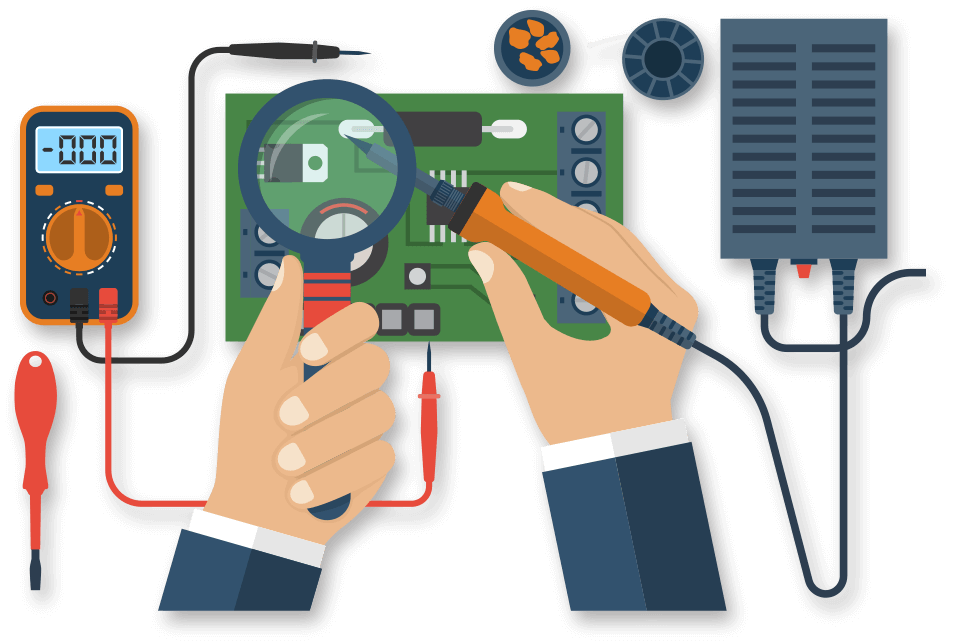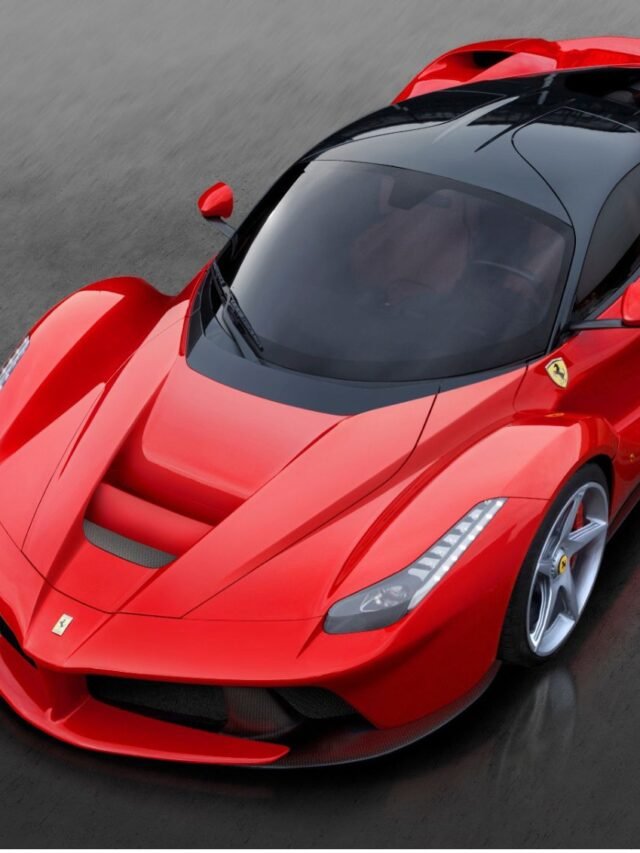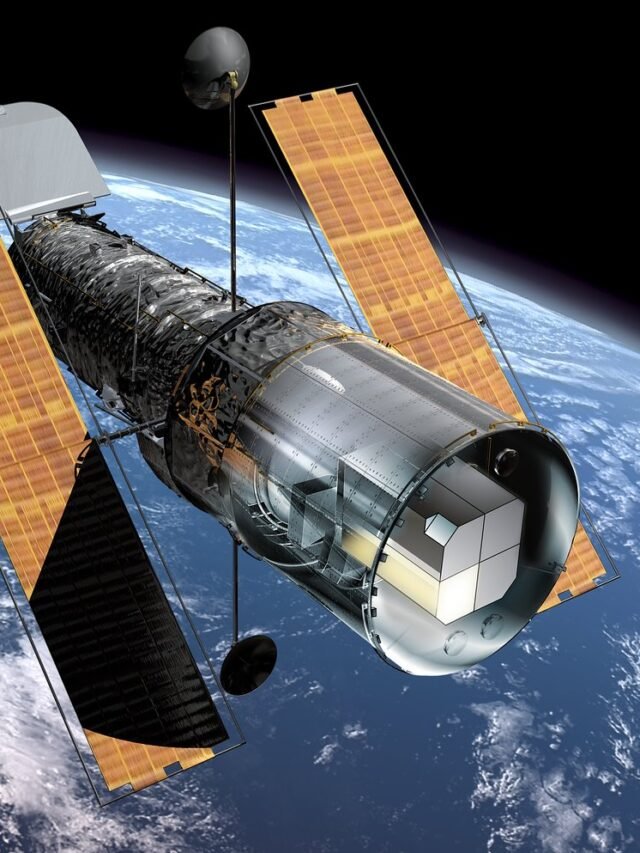in this chapter, we will Learn Basic Electronics in a simple way if you follow our steps and upcoming youtube videos then you can easily learn any electronic circuit just stay with us we will teach you everything in a simple way.
Table of Contents
ToggleWhat are Analog Electronics?
Analog electronics refers to electronic systems that operate on continuously variable signals, as opposed to digital electronics which operate on discrete signals. Analog circuits and systems are used in a wide range of applications, such as signal processing, audio and video equipment, and measurement and control systems. Some examples of analog electronic devices include amplifiers, oscillators, filters, and analog-to-digital converters. The main difference between analog and digital electronics is that analog electronics deal with continuously changing signal amplitudes, while digital electronics deals with discrete signal states.
Electricity
Electricity is a form of energy that results from the movement of charged particles, such as electrons. It is a fundamental force of nature and is used to power a wide range of devices and machines, including lights, appliances, vehicles, and industrial equipment.
Electricity is generated in power plants, which convert energy from various sources into electrical energy. These sources include coal, natural gas, nuclear energy, hydroelectric power, and renewable energy sources such as solar and wind power.
The flow of electricity is a movement of electric charge, typically through a conductive material such as a metal wire. Electric charge is measured in units called coulombs (C). The flow of charge is known as electric current, measured in amperes (A).
Electricity can also be stored in batteries, capacitors, and other devices, and can be distributed to homes and businesses through a network of power lines.
Electricity is also used in many industrial, commercial, and residential applications such as lighting, heating, air conditioning, appliances, transportation, communication, and many more.
The study of electricity and its properties is known as electricity. It includes the behavior of electric charges and the effects of electric fields and magnetic fields on charges. It also encompasses the study of electrical devices and systems, including generators, transformers, motors, and power systems.
It’s important to note that electricity can be dangerous and can cause injury or death if not handled properly. It is important to follow safety guidelines and regulations when working with electricity.
Electric Current
Electric current is the flow of electric charge through a material. It is measured in units called amperes (A). A measure of electric current is called an amp. One amp is equal to one coulomb per second. Electric current can be thought of as the flow of water in a pipe. Just as the flow of water in a pipe is measured in gallons per minute, the flow of electric charge is measured in amperes. Electric current is generated by the movement of electrons, which are negatively charged particles that are found in atoms. These electrons can be made to move by applying a voltage, which is a measure of the electric potential difference between two points. When a voltage is applied to a circuit, electrons will flow through the circuit, creating an electric current.
Electric current (EC) is the flow of electrons. Electrons are negatively charged particles that make up atoms. In the human body, electrical currents are produced by the heart, nerves, muscles, and brain.
Ampere
An amp, or ampere, is a unit of measurement for electric current. It is the base unit of electric current in the International System of Units (SI). One amp represents the flow of one coulomb of charge per second. Coulombs are the unit of charge, and one coulomb is equal to 6.241 x 10^18 electrons.
Current is the flow of electric charge, and it is measured in amperes (A). For example, a current of 1 amp means that 1 coulomb of charge flows through a circuit every second. The relationship between current, voltage and resistance is described by Ohm’s Law, which states that current (I) is equal to the voltage (V) divided by resistance (R).
It is important to note that Amp is not a unit of power, it is a unit of currency which is the flow of electrons. Power is the rate at which energy is transferred and it is measured in watts (W). The relationship between power, voltage, and current is described by the formula Power = Voltage x Current.
Volts
Voltage, also known as electric potential difference, is a measure of the electric potential energy per unit charge in an electrical circuit. It is a force that causes current to flow through a circuit, and it is measured in units called volts (V). Voltage is the difference in electric potential energy between two points in an electric circuit.
Voltage is similar to water pressure in a pipe. Just as water pressure causes water to flow through a pipe, voltage causes an electric current to flow through a circuit. The more voltage that is applied to a circuit, the more current will flow through it. Voltage can be thought of as the “push” that drives the current through a circuit.
Voltage is also a key factor in determining the amount of power that is delivered by an electrical circuit. The formula for power is Power = Voltage x Current. This means that a higher voltage will result in more power being delivered to a circuit, and a lower voltage will result in less power being delivered.
Voltage is also an important parameter to consider in electronic devices as it is used to set the operating conditions of the device. For example, in an electronic circuit, if the voltage supplied is less than the minimum voltage requirement, the device will not function properly.
Resistance
Resistance is a measure of the opposition to the flow of electric current in an electrical circuit. It is measured in units called ohms (Ω). In a circuit, resistance opposes the flow of electric current and causes the energy in the current to be converted into heat.
Resistance is a property of the material that makes up the components of the circuit. The resistance of a material is determined by its atomic structure and the number of free electrons available to carry current. For example, a copper wire has a lower resistance than an aluminum wire of the same size, because copper has more free electrons available to carry current.
Resistance is an important factor to consider in electronic devices, as it can affect the operation of the device. For example, in a circuit, if the resistance is too high, it can cause the voltage to drop, resulting in less power being delivered to the device. In addition, high resistance can also cause heat to build up in the circuit, which can damage the device.
The relationship between current, voltage and resistance is described by Ohm’s Law, which states that current (I) is equal to the voltage (V) divided by resistance (R). Ohm’s law can be written as I = V/R or V=IR. This means that the greater the resistance in a circuit, the less current will flow through it for a given voltage, and the less power will be delivered to the circuit.
Capacitance
Capacitance is the ability of a device, such as a capacitor, to store electric charge. It is measured in units called farads (F). Capacitors are passive electronic components that are widely used in electronic circuits, particularly in power supplies, signal processing, and communication systems.
A capacitor is made up of two conductive plates separated by an insulating material called a dielectric. When a voltage is applied across the plates, an electric field is created, which causes an electric charge to accumulate on the plates. The amount of charge that can be stored on the plates is determined by the area of the plates and the distance between them.
Capacitance is an important factor to consider in electronic devices, as it can affect the operation of the device. For example, in a circuit, a capacitor can be used to store energy during a power outage, and then release it when power is restored. Capacitors can also be used to filter out unwanted noise from a signal, smooth out voltage fluctuations in a power supply, and shape time-dependent signals in electronic circuits.
The relation between the Capacitance and Voltage is described by the equation Q = CV, where Q is the amount of charge stored on the plates, C is the capacitance, and V is the voltage across the plates. This equation states that the greater the capacitance, the greater the amount of charge that can be stored on the plates for a given voltage.
Frequency
the number of occurrences of a repeating event per unit of time. It is measured in hertz (Hz) and is commonly used in physics, engineering, and electronics to describe the rate of oscillations or vibrations.
Frequency is an important concept in many areas of science and technology, and it is used to describe everything from the vibrations of a guitar string to the oscillations of a radio wave. In electrical circuits, frequency is used to describe the rate at which an alternating current (AC) oscillates. For example, the frequency of a typical household power outlet is 60 Hz, which means that the current oscillates 60 times per second.
In sound and music, frequency is used to describe the pitch of a sound. Higher-frequency sounds have a higher pitch, while lower-frequency sounds have a lower pitch. For example, a high-pitched whistle has a higher frequency than a low-pitched bass drum.
Frequency is also used in telecommunications and telecommunications engineering, where the frequency of a radio wave or signal is used to determine its wavelength and its ability to carry information.
Frequency is related to the period of a wave (T), which is the time it takes for a wave to complete one full cycle, by the equation f = 1/T, where f is the frequency and T is the period.
In summary, frequency is a measure of how often something happens and it is widely used in different areas to describe the rate of different phenomena, like the oscillation of an electric current, the pitch of a sound, and the capacity of a radio wave to carry information.
Power
Power is the rate at which energy is transferred or the amount of work done over a certain period of time. It is measured in watts (W) and is commonly used in physics, engineering, and electronics to describe the amount of energy being used or produced by a device or system.
There are two types of power: real power and apparent power. Real power is the power that is actually used by a device or system, and it is measured in watts (W). Apparent power is the power that is apparently being used by a device or system, and it is measured in volt-amperes (VA).
Power can also be described in terms of current and voltage, with the formula P = IV, where P is power, I is current, and V is voltage.
Power can also be described in terms of energy, with the formula P = E / t, where P is power, E is energy and t is time.
Power is an important concept in many areas of science and technology, and it is used to describe everything from the energy consumption of a lightbulb to the power output of a wind turbine. In electrical circuits, power is used to describe the rate at which energy is being used or produced by a device or system.
In summary, Power is a measure of how much energy is used or produced over a certain period of time. It is closely related to current, voltage, and energy, and it is widely used to describe the performance of different devices and systems.
What is the power factor?
Power factor is a measure of how effectively electrical power is being used in a circuit. It is defined as the ratio of real power (measured in watts) to apparent power (measured in volt-amperes). A power factor of 1 indicates that all the power supplied to a circuit is being used effectively, while a power factor of less than 1 indicates that some of the power is being wasted. Power factor can be improved by using devices such as power factor correction capacitors, which can help to increase the amount of real power being used in a circuit.
What are Kva and kv?
KVA and kV are units of measurement used in the electrical industry to describe power and voltage, respectively.
KVA stands for “kilovolt-amperes” and is a unit of apparent power. Apparent power is the power that is apparently being used by a device or system and is measured in volt-amperes (VA). KVA is a unit of apparent power that is equal to 1,000 VA. It is commonly used to describe the apparent power consumption or production of electrical devices, such as transformers and generators.
kV, on the other hand, stands for “kilovolts” and is a unit of voltage. Voltage is the difference in electric potential between two points in a circuit, and it is measured in volts (V). kV is a unit of voltage that is equal to 1,000 volts. It is commonly used to describe the voltage level of electrical power systems, such as transmission and distribution lines.
In summary, KVA is a unit of apparent power, which is the power that is apparently being used by a device or system, while kV is a unit of voltage, which is the difference in electric potential between two points in a circuit. They are both used to describe different aspects of electrical power systems and devices.
Diode
A diode is a two-terminal electronic device that conducts current in one direction, but not in the opposite direction. It is a semiconductor device that allows current to flow in one direction while blocking current flow in the opposite direction.
A diode has two terminals, the anode, and the cathode. The anode is the terminal that is positively charged, and the cathode is the terminal that is negatively charged. When a diode is forward-biased, that is, when a voltage is applied to the anode that is more positive than the cathode, it allows current to flow through it. However, when a diode is reverse-biased, that is, when a voltage is applied to the anode that is less positive than the cathode, it does not allow current to flow through it.
Diodes are widely used in electronic circuits for a variety of applications such as rectification, voltage regulation, signal mixing, and signal detection. They are also used in power supplies to convert alternating current (AC) to direct current (DC) and in various electronic devices like television, computers, and radios.
Diodes come in many different types, each with its own specific characteristics and applications, such as:
- Zener diodes: used to maintain a steady voltage level
- Schottky diodes: used for high-speed switching and low-voltage drop
- Light Emitting Diodes(LED): used for lighting and displays
- Photodiodes: used for sensing light
- Varactor Diodes: used for tuning and frequency control
- Tunnel Diodes: used for high-frequency and high-power applications.
In summary, a diode is a semiconductor device that allows current to flow in one direction, while blocking current flow in the opposite direction. It is widely used in electronic circuits for a variety of applications such as rectification, voltage regulation, signal mixing, and signal detection.
What are inductors and transformers?
what are inductors and transformers?
An inductor, also known as a reactor or coil, is a passive electrical component that stores energy in a magnetic field when electric current flows through it. It is typically made up of a coil of wire, such as copper, that is wrapped around a core of a magnetic material, such as iron.
When electric current flows through the coil, it creates a magnetic field around it. The strength of this magnetic field depends on the amount of current flowing through the coil and the number of turns in the coil. The magnetic field induces an electromotive force (EMF) in the coil, which opposes the change in current. This property is known as inductance, and it is measured in units of henrys (H).
Inductors are used in a variety of electrical applications, such as:
- Filtering: Inductors are often used in filters to remove unwanted frequencies from a signal.
- DC-DC conversion: Inductors are used in DC-DC converters to smooth out the output voltage
- Power supplies: Inductors are used in power supplies to store energy in the magnetic field and release it as needed to maintain a steady output voltage
- Motor control: Inductors are used in motor control circuits to smooth out the current and reduce the amount of electrical noise
A transformer is an electrical device that transfers electrical energy from one circuit to another, or from multiple circuits. A varying current in any of the transformer’s coils causes a varying magnetic flux in the core, which induces a varying electromotive force across any other coils wound around the same core. Without a metallic connection between the two circuits, electrical energy can be transferred between separate coils. Faraday’s law of induction discovered in 1831 described the induced voltage effect in any coil caused by any change in magnetic flux that encloses the coil.
Transformers are used in a variety of electrical applications, such as:
- Power transmission: Transformers are used to step up or step down the voltage in power transmission systems to reduce energy loss over long distances.
- Power distribution: Transformers are used to step down the voltage in power distribution systems to a level that is safe for use in homes and businesses.
- Audio equipment: Transformers are used in audio equipment to isolate the input and output signals and to match the impedance of the equipment.
- AC to DC conversion: Transformers are used in power supplies to convert AC to DC.
In summary, an inductor is a passive electrical component that stores energy in a magnetic field when electric current flows through it, it’s typically made up of a coil of wire, and it’s used for many applications like filtering, DC-DC conversion, power supplies, and motor control. While a transformer is an electrical device that transfers electrical energy from one circuit to another, or from multiple circuits, it’s used for many applications like Power transmission, Power distribution, Audio equipment, and AC to DC conversion.
Transistor
A transistor is a semiconductor device that can be used to amplify or switch electronic signals. It consists of three layers of semiconductor material, typically a p-n-p or n-p-n configuration, that are used to control the flow of current through the device. The middle layer, or base, is used to control the flow of current through the other two layers, or emitter and collector. Transistors are widely used in electronic devices such as radios, televisions, and computers because they are small, efficient, and can be easily integrated into circuits.
Types and uses of transistor
There are several types of transistors, each with its own specific characteristics and uses. The main types of transistors include:
- Bipolar Junction Transistor (BJT): This is the most common type of transistor and it uses both electrons and holes to control current flow. BJTs can be used for amplification or switching.
- Field-Effect Transistor (FET): FETs use an electric field to control current flow through a channel. They can be used for amplification or switching, and are commonly used in electronic devices such as amplifiers, digital logic gates, and microprocessors.
- Metal-Oxide-Semiconductor Field-Effect Transistor (MOSFET): This is a type of FET that uses a metal gate electrode to control current flow. MOSFETs are widely used in digital and analog circuits and are known for their high input impedance and fast switching speed.
- Junction Field-Effect Transistor (JFET): JFETs are similar to MOSFETs but they use a p-n junction to control current flow. They are known for their high input impedance and low noise characteristics.
- Unijunction Transistor (UJT): It is a three-layer semiconductor device with a P-N-P or N-P-N structure. It is used in oscillators and relaxation oscillators.
- Darlington Transistor: It is a combination of two bipolar junction transistors (BJTs) that are connected together in such a way that the current amplified by the first transistor is amplified further by the second one.
The uses of transistors are widespread and vary depending on the type and application. They are used in a wide range of electronic devices such as amplifiers, digital logic gates, microprocessors, power supplies, and switching circuits. They are also used in a variety of industrial and consumer applications such as cars, home appliances, medical equipment, and telecommunications systems.
Conductor
A conductor is a material or substance that allows electricity to flow through it easily. Examples of conductors include metals like copper and aluminum, as well as certain types of liquids and gases. In contrast, insulators are materials that do not allow electricity to flow through them easily. Examples of insulators include rubber, plastic, and glass.
dafination of conductor
A conductor is a material that allows the flow of electrical current through it. It is characterized by having low electrical resistance, which means that it easily allows electrons to flow through it. Conductors are used in a wide variety of electrical and electronic devices, including wires, electrical circuits, and batteries, and are typically made of materials such as copper, aluminum, gold, and silver.
Insulator
An insulator is a material that does not conduct electricity. Insulators are used to prevent the flow of electric current in electrical systems. They are used in a wide range of applications, including electrical power transmission and distribution, electronic devices, and electrical insulation for safety.
Insulators can be made from a variety of materials, including glass, rubber, ceramics, and certain plastics. They are characterized by high electrical resistance and low thermal conductivity.
Insulators are used in power transmission and distribution to separate electrical conductors from each other and from the ground. Insulating materials are used to cover the wire and to protect it from damage. These materials also help to maintain a clear electrical path between the conductor and the ground.
Insulators are also used in electronic devices to separate different parts of the circuit and to prevent electrical current from flowing where it is not needed. For example, insulators are used between the different layers of a printed circuit board (PCB) to prevent the flow of current between the layers.
In addition, insulators are used for safety, to protect people from electric shock. Insulating materials are used to cover electrical wires and to cover electrical equipment to prevent people from coming into contact with live electrical parts.
There are different types of insulator materials that are used for different applications, and the properties of an insulator can vary depending on the application and the type of material used.
Semiconductor
A semiconductor is a material that has electrical conductivity between that of a conductor and an insulator. It has intermediate electrical resistance and can be used to control the flow of electrical current. Semiconductors are used in a wide variety of electronic devices, including transistors, diodes, and integrated circuits. They are commonly made of materials such as silicon and germanium, which have properties that make them useful for controlling the flow of electrical current. Semiconductors are used in a wide range of electronic devices, from basic digital logic circuits to advanced microprocessors, and are a fundamental component of modern electronics.











